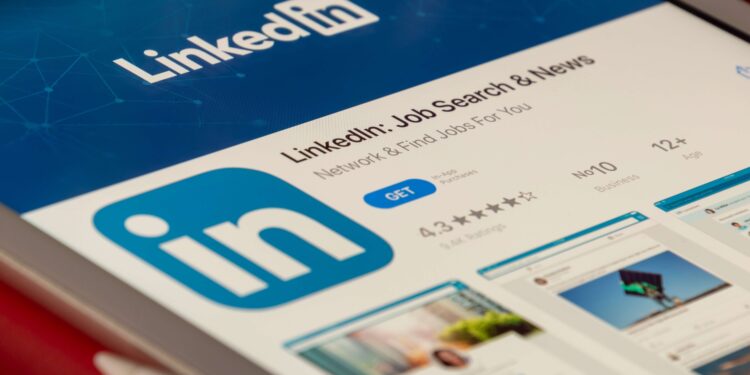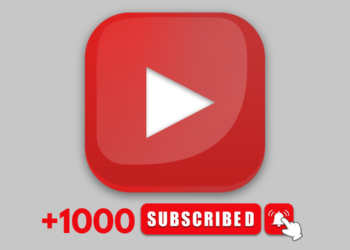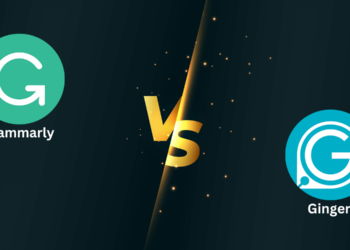In this article, “How to Make Money on LinkedIn,” we explore the different ways to monetize your presence on the platform and make money in 2023. From sponsored content, affiliate marketing, consulting, courses and webinars, to freelancing and recruiting, we provide expert tips and strategies for making money on LinkedIn. Whether you’re a seasoned professional or just starting out, this article will provide valuable insights and actionable steps to help you monetize your LinkedIn profile and make money on the platform.
LinkedIn is a powerful professional networking platform that has grown rapidly in recent years. With over 722 million users worldwide, it has become an essential tool for professionals to connect, network, and build their careers. But what are the key statistics that define the platform, and how can you make money on LinkedIn in 2023?
First, let’s look at the demographics of LinkedIn users. According to the platform’s own data, 44% of LinkedIn users are based in the United States, while India and China are the next largest user bases at 14% and 10%, respectively. In terms of gender, LinkedIn is slightly more male-dominated, with men making up 56% of users. However, women are more likely to be in senior-level positions, with 30% of women in leadership roles compared to 25% of men.
In terms of engagement, LinkedIn users are highly active on the platform. According to data from Hootsuite, LinkedIn users spend an average of 17 minutes per session on the platform, and the majority of users (61%) visit the platform daily. Additionally, LinkedIn users are highly engaged with content, with an average of 20 posts, comments, or reactions per user per month.
LinkedIn is a powerful platform that provides many opportunities for professionals to connect, network, and make money. By understanding the key statistics and demographics of LinkedIn users, you can create a strategy to monetize your presence on the platform in 2023.
In conclusion, LinkedIn is a professional networking platform with a huge user base and high engagement, it’s a great place to monetize your presence and make money in 2023. With different ways to monetize your profile, such as sponsored content, affiliate marketing, consulting, courses and webinars, and freelancing, you can find the best strategy that suits your expertise and interests.
A Short History of LinkedIn
LinkedIn was founded in 2002 by Reid Hoffman, Allen Blue, Konstantin Guericke, Eric Ly, and Jean-Luc Vaillant. The platform was launched as a social networking site for professionals, with the goal of connecting professionals in different industries and helping them to build their careers.
In its early days, LinkedIn struggled to gain traction, with many users unsure of how to use the platform or what its value was. However, the company was able to secure funding from venture capitalists, and by 2006 it had become profitable.
One of the key developments for LinkedIn was the launch of its “LinkedIn Recruiter” service in 2008, which allowed recruiters and hiring managers to search for and contact potential candidates on the platform. This helped to establish LinkedIn as a valuable tool for job seekers and recruiters alike.
In 2011, LinkedIn went public, and the company’s stock price has risen steadily since then. In 2016, Microsoft acquired LinkedIn for $26 billion, which helped to accelerate the platform’s growth and reach even more users.
Today, LinkedIn is a massive professional networking platform with over 722 million users worldwide, and it continues to grow. The platform is widely used by professionals to connect, network, and build their careers, and it is also a valuable tool for recruiters and hiring managers.
In short, LinkedIn’s history starts in 2002, it was founded by Reid Hoffman and other partners as a social networking platform for professionals, it struggled in its early days, but it was able to secure funding from venture capitalists. With the launch of its LinkedIn Recruiter service in 2008, it established itself as a valuable tool for job seekers and recruiters. In 2011, LinkedIn went public, and in 2016, it was acquired by Microsoft for $26 billion, which helped to accelerate the platform’s growth and reach more users. Today it’s a massive professional networking platform with over 722 million users worldwide.

How Can You Start with LinkedIn?
Starting with LinkedIn can be a great way to connect with other professionals, promote your personal brand, and advance your career. Here are some steps to help you get started:
Create a profile: Start by creating a professional profile that showcases your skills, experience, and accomplishments. Make sure to include a professional headshot and a clear, concise summary of your background and expertise.
Build your network: Reach out to colleagues, classmates, and other professionals you know and connect with them on LinkedIn. You can also join groups and communities related to your field to expand your network.
Share valuable content: Share relevant articles, updates, and insights to demonstrate your expertise and build your personal brand.
Engage with your network: Comment on and like other people’s posts, and participate in group discussions to build relationships and stay connected with your network.
Use LinkedIn’s features: Take advantage of LinkedIn’s features such as job listings, company pages, and LinkedIn Learning to further advance your career.
Be consistent: Be consistent in updating your profile, posting and engaging with your network. This will keep your profile active and help you to achieve your goals on LinkedIn.
By following these steps, you can start building your presence on LinkedIn and take advantage of the many benefits that it has to offer.
Read also:
- How to make Money from Instagram
- Advertising on Twitter
- What is affiliate marketing | Complete guide 2023
- How to Increase Website Traffic | Ultimate Guide 2023
- NordVPN vs ExpressVPN (Update 2023)
- 14 Top Niches On YouTube | 2023 Update
How to Make Money on LinkedIn?
There are several ways to make money on LinkedIn, including:
1- Sponsored content
Companies will pay you to create and post content on your LinkedIn profile that promotes their brand or product.
Sponsored content on LinkedIn is a way to monetize your presence on the platform by creating and posting content that promotes a brand or product, for which you are paid. To make money from this method, you need to have a sizable following and a good engagement rate on LinkedIn. You can find sponsored content opportunities by reaching out to brands directly, applying to their influencer marketing programs, or using influencer marketing platforms. It’s important to make sure that sponsored content aligns with your personal brand and values and to disclose it clearly, as per LinkedIn’s policies and FTC’s guidelines.
2- Affiliate marketing
You can earn a commission by promoting products or services on your LinkedIn profile and providing a link for users to purchase them.
Affiliate marketing is a type of performance-based marketing where a person (affiliate) promotes a product or service and earns a commission for every sale that results from their promotion. On LinkedIn, affiliate marketing can take many forms, such as sponsored posts, sponsored articles, and sponsored videos, that contain a specific link or code to a product or service. The affiliate will typically receive a commission for each sale that is made through their unique link or code.
As a LinkedIn user, you can take advantage of affiliate marketing by partnering with companies and promoting their products or services on your profile. By providing a unique link or code to a product or service, you can earn a commission for each sale that results from your promotion. This can be a great way to monetize your social media presence, as it allows you to earn money without having to create your own products or services.
To start affiliate marketing on LinkedIn, you’ll need to find companies that have an affiliate program, and then sign up to become an affiliate. Once you have joined an affiliate program, you can start promoting products or services on your profile and providing a unique link or code for your audience to purchase them. It’s important to note that the products or services you promote should be relevant to your audience and your niche.
3- Consulting
If you have expertise in a specific field, you can offer consulting services to other professionals on LinkedIn.
Consulting is a service where an expert provides advice and guidance to organizations or individuals in a specific field. If you have expertise in a specific field, you can offer consulting services to other professionals on LinkedIn by providing them with valuable advice and guidance to help them achieve their goals. This can be done by reaching out to potential clients directly, creating a LinkedIn profile that showcases your expertise and services, and using LinkedIn groups to connect with professionals in your field. This can be a good way to monetize your LinkedIn profile and expertise by providing valuable service to others.
4- Courses and webinars
You can create and sell courses or webinars on LinkedIn to share your knowledge and skills with others.
Courses and webinars are a way to share your knowledge and skills with others by creating and selling educational content on LinkedIn. These can be in the form of self-paced online courses or live webinars. As a LinkedIn user, you can create and sell courses or webinars by providing valuable information and training to help other professionals learn new skills or improve their knowledge in a specific field. To start creating and selling courses or webinars on LinkedIn, you’ll need to have expertise in a specific field and be able to create high-quality educational content. Additionally, you’ll need to have a strategy for promoting your courses or webinars and reaching your target audience.
5- Freelancing
You can use LinkedIn to find freelance work or to promote your services as a freelancer.
Freelancing is a way of working independently, where individuals offer their services on a project basis to different clients. LinkedIn can be used as a platform for freelancers to find work or to promote their services. Freelancers can create a professional profile on LinkedIn, highlighting their skills and experience, and use it to connect with potential clients, showcase their portfolio of work and skills. They can also join groups and communities related to their field, post updates and articles to demonstrate their expertise, and use LinkedIn’s job listing feature to find freelance opportunities.

6- Recruiting
If you have a talent in recruitment and headhunting, you can offer your services to companies and earn a commission for successful hires.
Recruiting, also known as headhunting, is the process of finding and hiring qualified candidates for a company. LinkedIn can be a great tool for recruiters to find potential candidates, connect with them, and offer their services to companies. If you have a talent in recruiting, you can offer your services to companies on LinkedIn and earn a commission for successful hires. This is usually done by recruiting agencies or headhunters, but individuals who are experts in recruiting can also offer their services and earn commissions for successful hires.
7- LinkedIn Ads
You can monetize your business page by creating sponsored ads and reaching out to a larger audience.
LinkedIn Ads is a way to monetize your business page by creating sponsored ads and reaching out to a larger audience on LinkedIn. It allows you to target specific groups of people based on their job title, industry, company size, location, and more. This feature can be used by businesses, brands, and individuals to promote their products, services, and content to a wider audience on LinkedIn. It can be an effective way to generate leads, increase website traffic and ultimately, increase revenue
8- Sponsored Groups
Create a group on LinkedIn and monetize it by allowing companies to post sponsored content.
Sponsored Groups is a way to monetize your LinkedIn presence by creating a group and allowing companies to post sponsored content in it. This feature allows you to attract a large following to your group, and then monetize it by allowing companies to post sponsored content to reach your group’s audience. By doing this, you can generate revenue while providing value to your group members by sharing relevant content. Companies can use this feature to increase their brand awareness, generate leads and promote their products or services.
9- Product Reviews
You can review products and services on your LinkedIn profile and get paid for it.
Product Reviews is a way to monetize your LinkedIn profile by reviewing products and services and getting paid for it. It allows you to share your opinion and experience about a product or service with your audience on LinkedIn and get paid for your honest review. Companies are willing to pay for this type of content because it helps to increase brand awareness, generate leads, and promote their products or services. To start reviewing products and services on LinkedIn, you’ll need to have a strong personal brand and an active following, and reach out to companies offering this type of opportunity.
10- Brand Ambassador
You can become a brand ambassador for a company and get paid for promoting their products or services on your profile.
Brand Ambassadorship is a way to monetize your LinkedIn profile by becoming a representative of a company, promoting their products or services, and getting paid for it. As a brand ambassador, you will be responsible for promoting a company’s products or services on your LinkedIn profile, and you will be paid for your efforts. This can include creating sponsored posts, videos, or articles, as well as engaging with your audience about the brand. To start as a brand ambassador on LinkedIn, you’ll need to have a strong personal brand and an active following, and reach out to companies offering this type of opportunity.
It’s important to note that not all of these methods may be suitable for you, and it’s recommended to choose the ones that align with your expertise and interests. Additionally, you should always disclose any sponsored content or affiliate links on your profile, as per LinkedIn’s policies.
















